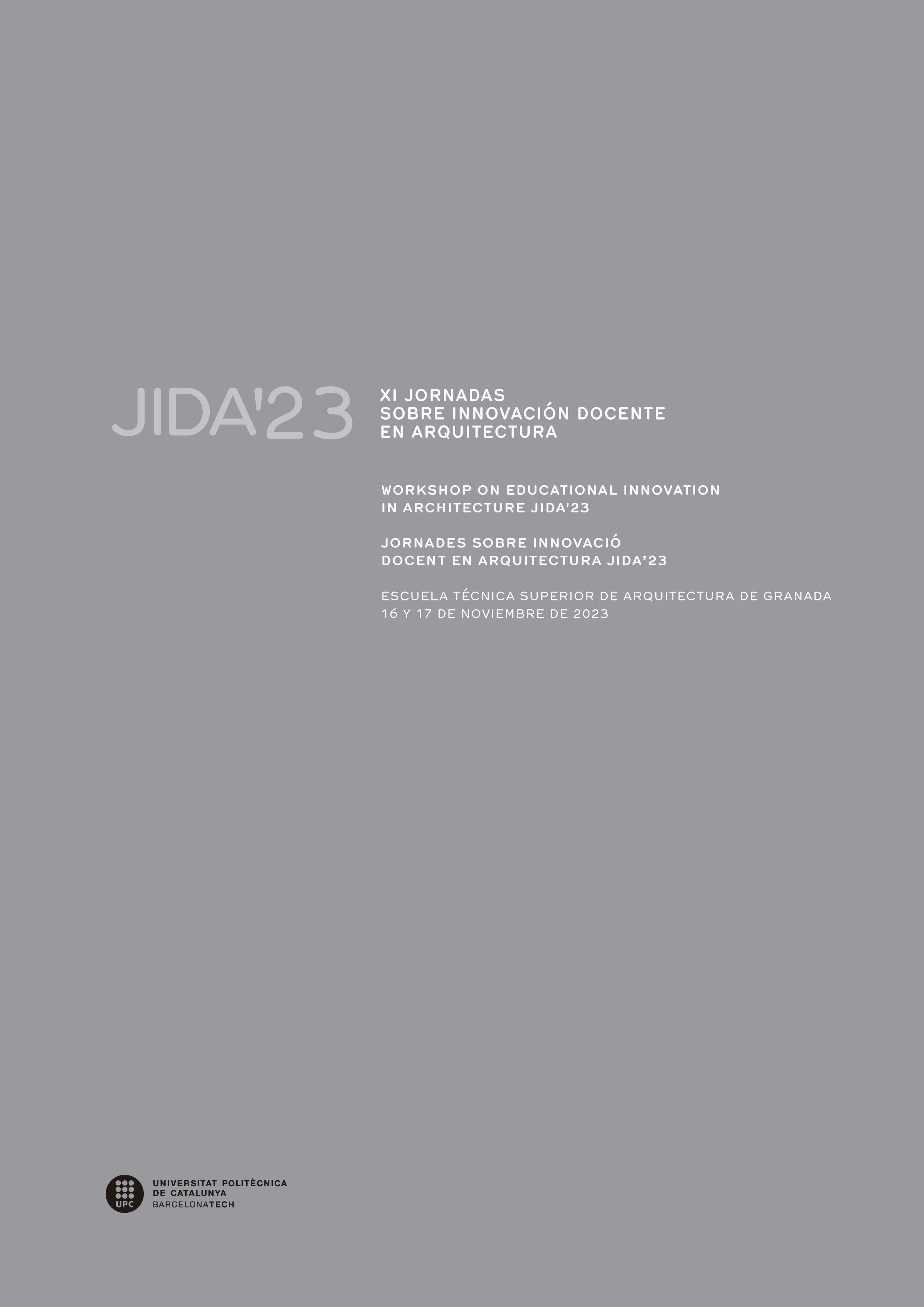The hero’s death: The creation of an inclusive and cooperative professional narrative
DOI:
https://doi.org/10.5821/jida.2023.12275Keywords:
profession, vocation, academy, professional bar, labour marektAbstract
The figure of the liberal architect as a project author, the idealized creator, pervades, in Spain, the simbotic relationship between educational and professional institutions sin, in 1931, the Architects Bar was created. However, the evolution of the field points to the necessity of a more inclusive academical and professional approach, able to leave behind an education and an integration into the labour market dangerously similar to Cambell’s hero’s journey. The teaching experience of the Architecture & Profession research group in the Degree in Architectural Fundaments at URJC, develops a transversal approach, enlargening the professional models and the seflperception of the students and it can be used to stablish a bidirectional collaborative and integrative relation with the Architect’s Bar. It can, in other terms, kill the hero and make way for the cooperative professional.
References
Bardí Milà, Berta, y Daniel García-Escudero. 2020. «El debate sobre la enseñanza de la arquitectura en España:1957 - 1975». En Blanco, Revista de Arquitectura 12 (28): 106-23.
Bourdieu, Pierre, y Jean Claude Passeron. 1998. La reproducción: elementos para una teoría del sistema de enseñanza. México: Distribuciones Fontamara.
Campbell, Joseph. 2017. El héroe de las mil caras: psicoanálisis del mito. Ciudad de México: Fondo de Cultura Económica.
Cortright, Marisa. 2019. «Death to the Calling: A Job in Architecture is Still a Job». Failed Architecture, 2019.
CSCAE. 2018. «Encuesta Colegiad@s 2018».
D’Aprile, Marianela, y Spencer, Douglas. 2022. «Notes on Tafuri, Militancy, and Unionization». The Avery Review. Critical Essays On Architecture, n.o 56 (abril). https://averyreview.com/issues/56/notes-on-tafuri.
Deamer, Peggy, ed. 2015. The architect as worker: immaterial labor, the creative class, and the politics of design. London ; New York: Bloomsbury Academic.
Díaz-Plaja, Guillermo Luis. 1971a. «Los nuevos arquitectos (I)». Triunfo, 3 de abril de 1971.
Díaz-Plaja, Guillermo Luis. 1971b. «Los nuevos arquitectos (II)». Triunfo, 10 de abril de 1971.
Luque, Emilio. 2009. «Informe sobre el estado de la Profesión 2009». Madrid: Consejo Superior de Colegios de Arquitectos de España, Arquia Caja de Arquitectos.
Martín Rivas, Manuel. 2016. «Factores psicosociales de riesgo en el entorno académico. La carrera de Arquitectura en la Universidad Politécnica de Madrid.» Tesis Doctoral, Universidad Complutense de Madrid.
Martykánová, Darina. 2007. «Por los caminos del progreso. El universo ideológico de los ingenieros de caminos españoles a través de la Revista de Obras Públicas (1853-1899)». Ayer. Revista de Historia Contemporánea 68 (4): 193-219.
Moya, Luis. 1963. «Carta Abierta a Don Carlos de Miguel». Revista Arquitectura 58: 43-44.
Sennett, Richard. 2017. El artesano. Traducido por Marco Aurelio Galmarini. Sexta edición. Colección argumentos. Barcelona: Editorial Anagrama.
Vaz, Céline. 2017. «Los arquitectos a finales del franquismo, entre la crisis profesional y el compromiso político-social». Segle XX. Revista catalana d’hitòria 10: 31-48.
Vergés Escuín, Ricardo. 1980. «El porvenir económico del arquitecto». Montreal: UNESCO / UIA.
Wittkower, Rudolf, y Margot Wittkower. 2017. Nacidos bajo el signo de Saturno: genio y temperamento de los artistas desde la antigüedad hasta la revolución francesa. Madrid: Ediciones Catedra.
Zafra, Remedios. 2017. El entusiasmo: precariedad y trabajo creativo en la era digital. Barcelona: Anagrama.



















